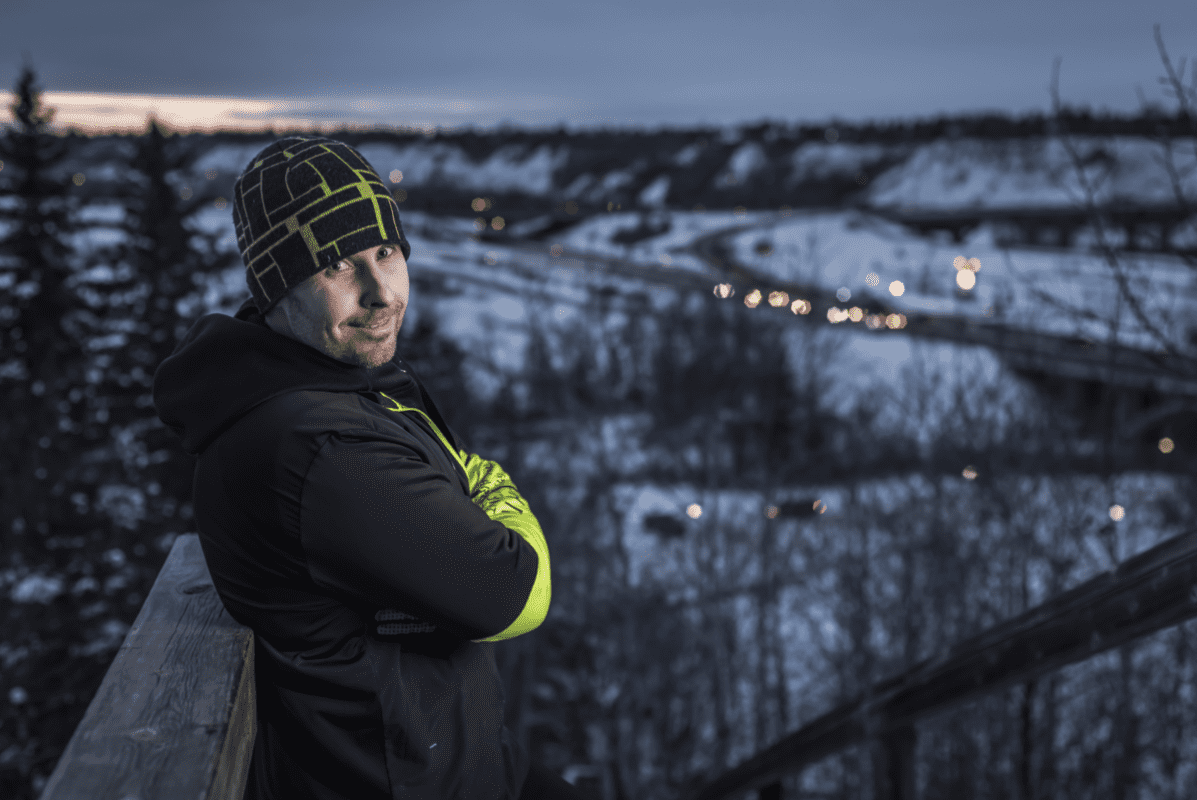Obstacle course training can be tough; it can also be a lot of fun! Don’t let the YouTube videos and social media posts from your friends intimidate you, there is plenty of joy and excitement that comes with getting outdoors and getting active amongst the sunshine, fresh air and nature. If you’re thinking about giving the sport a try, I say take the leap and jump in with both feet! You’ll never regret it.
To make sure your experience on the course is as enjoyable as you hope, you’ll need to train for it. Below are a few simple suggestions on how you can prepare your body and mind for the adventure that awaits you.
1. Run – A Lot
Even for beginners, it is good to have an ability to run (or jog). Obstacle courses consist of 80% running (or walking) and 20% obstacles so if you can run you will enjoy the overall experience a lot more.
For your average 5 km race such as a Spartan Race, being able to run at a comfortable pace for an hour would do you well on the course. An easy goal to help lengthen your running distance is to Increase your weekly mileage by 10%. If you’re new to running simply start by jogging for 5 minutes followed by 5 minutes of walking and work on increasing the amount of running you do each interval and reduce the amount of walking. Before you know it, you’ll be running the entire time.
2. Add Flavour to your Running:
It’s not just running you should be good at; you should be strong too. For obstacle course racing this doesn’t mean you need to be Superman, but you should have well-rounded strength. The best exercises for OCR revolve around bodyweight; Pull-ups, Push-ups, Squats, Lunges, Burpees and Sit-ups work well and can be added into any running program. Add them into your runs to add flair and difficulty. Stopping during your run to do strength exercises can help train your body for the inefficient nature of obstacle course training and teach you how to effectively transition from cardiovascular to strength systems with minimal delays in your breathing or energy.
Sample Workout: Run for 1 to 2 minutes at your normal tempo, stop and perform 20 reps of any exercise. Repeat for 3 to 5 miles.
3. Train in the Elements
Treadmills and sidewalks are great for running, but if you want to get ready with obstacle course training, you need to get outdoors and onto the trails. They can be uneven, rocky, muddy, and unpredictable which makes them perfect for teaching your legs and your mind how to adapt at a moment’s notice. Running on trails will help strengthen your ankles, knees and hips and develop your balance and coordination. To add fun to your runs, instead of avoiding the puddles, fallen trees or mud along the trail – practice jumping across them, crawling under or jumping over as you go. You’ll build up explosive power in your legs without even thinking about it. If you have no trails nearby and you need to stick to sidewalks and roads, try running in an inefficient manner, zig zagging along the road or bounding on and off the curb. Try alternating between grass and concrete terrain to mimic the unpredictable nature of trails under your feet.
4. Train Heavy
One of the easiest ways to train your body to perform under pressure and extreme conditions like an obstacle race is to incorporate heavy carries into your cardio. Grab a heavy log, rock or fill a backpack up with soup cans and carry it with you on your adventures through the trails. Using weight above and beyond your own body weight will strengthen your core, legs and stability as well as your ability to breathe comfortably under additional stress. If you can move well with excess weight, you’ll be able to move easier and quicker with only your bodyweight, leading to speed and endurance.
To add even more flavour into your workouts, try hauling a heavy log up and down hills or a set of stairs, then use it to perform shoulder presses, bi-cep curls and deadlifts. All moves require you to develop brute strength and grip to securely hold the heavy object, which is vital for upper body obstacles.
5. Get a Grip
Many obstacles involve grip strength; carrying something heavy up a hill, swinging from bars, or holding onto a wall as you pull yourself up. It all takes grip. Traditional exercises such as pull-ups, deadlifts and back-rows are good, but if you want to think outside of the box, try bouldering at your local rock-climbing gym. Bouldering strengthens your fingers, hands, wrists and forearms in ways similar to how they function in a race. Rock-climbing can also improve your back, quads and hamstrings. It’s also great to develop your problem-solving skills.
Playgrounds are also a great place to train grip strength for obstacle course training. They usually have bars of all shapes and sizes to swing from, climb up or hold on to. Different thickness of the bars can add a unique element to any pull-up or grip exercise.
P.S. – Don’t Forget to Rest: Recovering from a workout and letting your body rest is often overlooked when training. Lack of rest can lead to overuse injuries and mental burnout. To avoid problems closer to race day, make sure you schedule 1 to 2 rest days into your weekly schedule. If resting is too tough for you or you feel guilty taking a day off; try active resting and do a light workout such as stretching, yoga, walking the dog or cycling.
Here are some of the top obstacle course races (OCR) and events in Western Canada. Please note that event schedules and popularity can change, so it’s essential to check the latest information and registration details for these races:
- Tough Mudder Whistler (British Columbia): Known for its challenging courses and camaraderie, Tough Mudder is a popular OCR series. The Whistler event typically offers stunning mountain scenery as the backdrop for your muddy adventures.
- Spartan Race (Various Locations): Spartan Race has various race formats, including the Spartan Sprint, Super, and Beast, with events held in Western Canada. These races are known for their intense obstacles and competitive atmosphere.
- Rugged Maniac (Alberta): Rugged Maniac features a 5-kilometer course with 25 obstacles, including water slides and fire jumps. It’s a fun and accessible OCR for participants of all fitness levels.
- MuckMS (British Columbia): This event combines mud, obstacles, and a focus on raising funds for multiple sclerosis research. It offers a unique way to challenge yourself while supporting a good cause.
- Badass Dash (British Columbia): Badass Dash combines challenging obstacles with a fun and festive atmosphere. Participants can choose between various race lengths and obstacle options.
- X Warrior Challenge (Alberta): This Canadian OCR series offers a range of events, from short and intense courses to longer endurance races. It often features unique and innovative obstacles.
- Fort Henry OCR Series (British Columbia): Held at Fort Henry, this OCR event takes advantage of the historical site to create a unique and challenging course with various obstacles.
- Conquer the Valley (British Columbia): Conquer the Valley features both OCR and trail running events, making it an excellent option for those who enjoy a mix of adventure racing and trail running.
- Grindstone (British Columbia): Grindstone offers a variety of race formats, including OCR and trail races. It’s known for its challenging terrain and beautiful natural surroundings.
Please keep in mind that event schedules, locations, and popularity can change over time, so it’s essential to visit the official websites of these races or search for the latest information and updates when planning to participate in an OCR event in Western Canada.
Written by Cody Price – Rise Up Challenge








